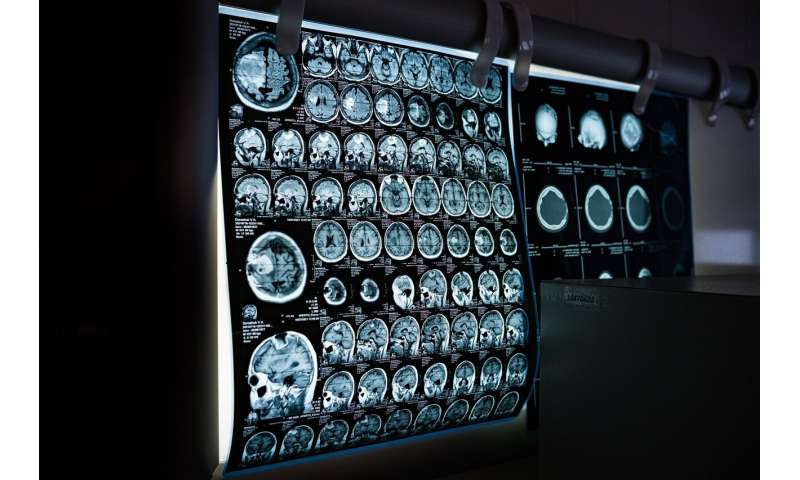Neuroimaging, AI help detect brain changes

Researchers at the University of Cincinnati and Dell Medical School at the University of Texas at Austin (Dell Med) are leading a study using state-of-the-art neuroimaging techniques and artificial intelligence to identify changes in the brains among children of adults living with bipolar disorder—a debilitating condition that interferes with daily life due to its dramatic mood, energy and activity level shifts.
Almost 3% of U.S. adults live with bipolar disorder, one of the leading causes of disability worldwide. The highest risk factor for bipolar disorder is having a close family member with the condition.
The study is co-led by UC's Melissa DelBello, MD; Jorge Almeida, MD, and Charles Nemeroff, MD, Ph.D. of Dell Med and Indiana University's Stephen Strakowski, MD.
"We are hoping to clarify how stress and trauma impact brain development in children and adolescents who have a family risk for bipolar disorder," said DelBello, the Dr. Stanley and Mickey Kaplan Endowed Chair and Professor in the Department of Psychiatry and Behavioral Neuroscience at UC's College of Medicine.
"This work is the next step in studying risk and resilience factors associated with bipolar disorder."
The brain's inability to "hit the brakes" on energy delivered by its reward system results in manic behaviors such as spending too much money, engaging in risky behaviors and sleep loss or disruption, said Almeida, director of the Bipolar Disorder Center at Mulva Clinic for the Neurosciences and associate professor in the Department of Psychiatry and Behavioral Sciences at Dell Med.
The study is the first of its kind to focus specifically on the progression of the disease over time via neuroimaging in children of parents with bipolar disorder.
The research leverages AI algorithms to discern variations in participants' brains, combining imaging data with cognitive, clinical, early life adversity and psychosocial function measures. The result is a precise delineation of brain maturation for each person at risk of developing bipolar disorder.
The five-year longitudinal study uses functional magnetic resonance imaging to identify early signs that the brain is developing bipolar disorder. Participants ages 14–21—a critical time when mania symptoms often develop—undergo annual brain scans to track changes in the brain. If they become depressed, suicidal or experience mania, the participants undergo additional brain scans to help researchers understand how the damage is unfolding.
Participants also undergo mood assessments and are required to perform tasks that activate and test the brain's reward system.
"This study will increase our understanding of the onset of bipolar disorder and ultimately help us identify effective strategies to intervene early or prevent the onset of the illness," DelBello said.
"This study evokes hope for me," Almeida said. "Hope that we finally have the tools to help this condition and possibly prevent it from ever happening."
Provided by University of Cincinnati